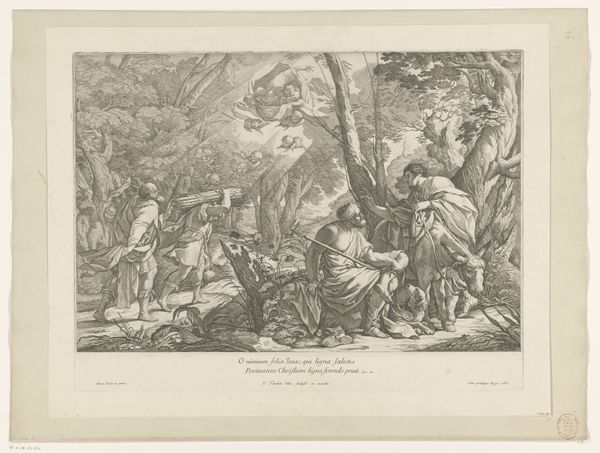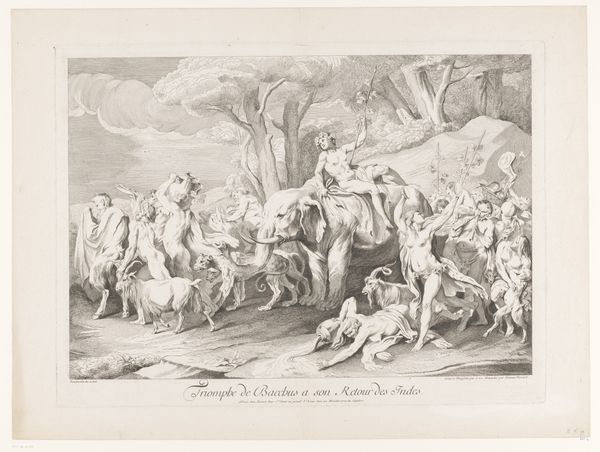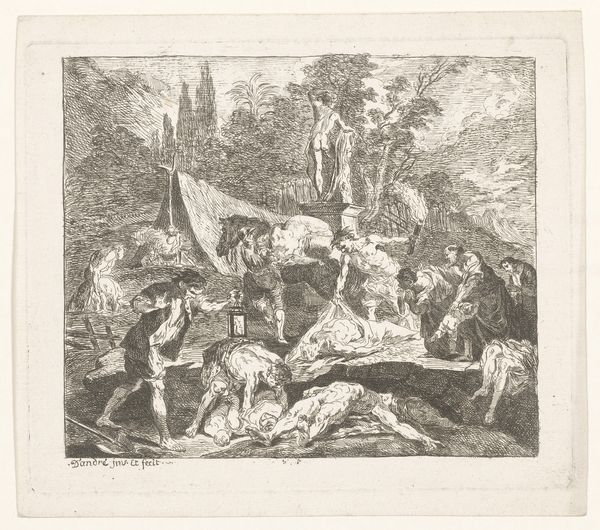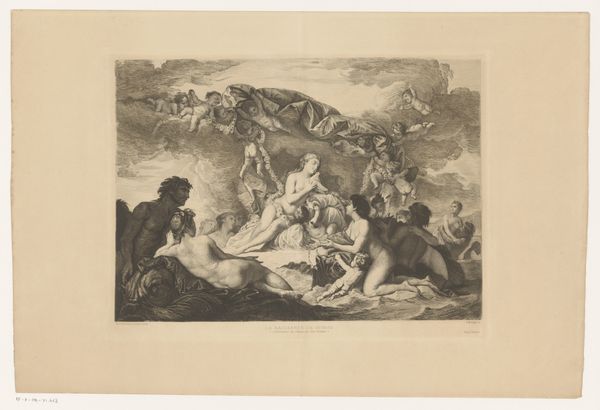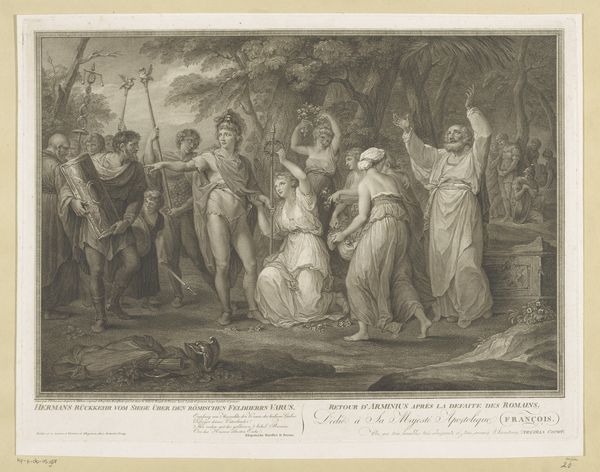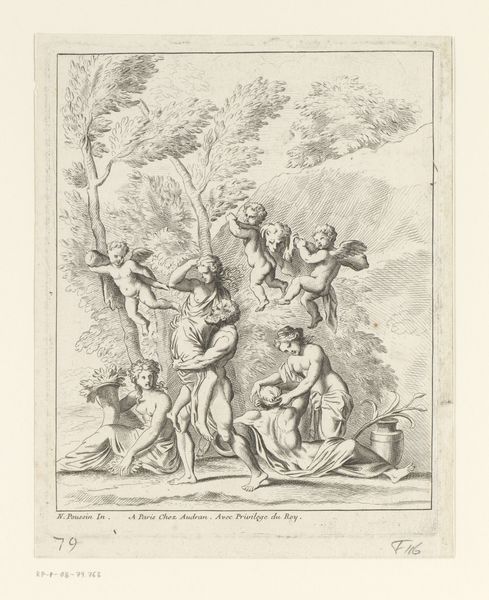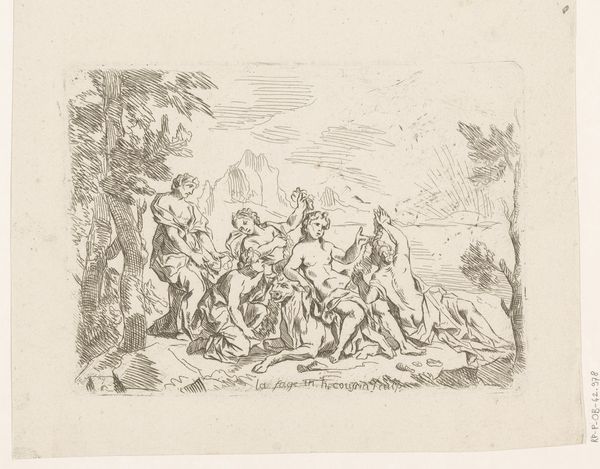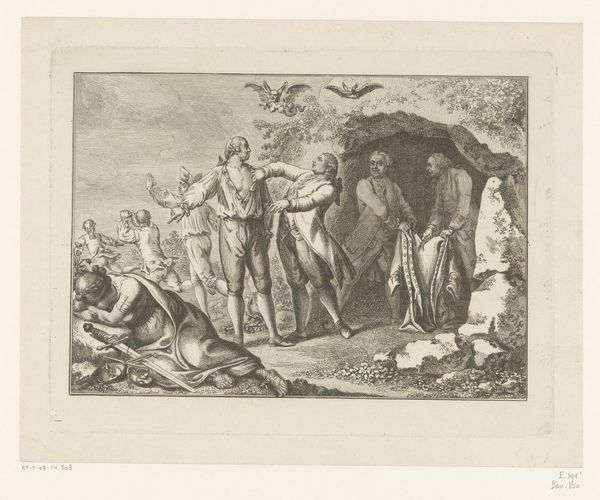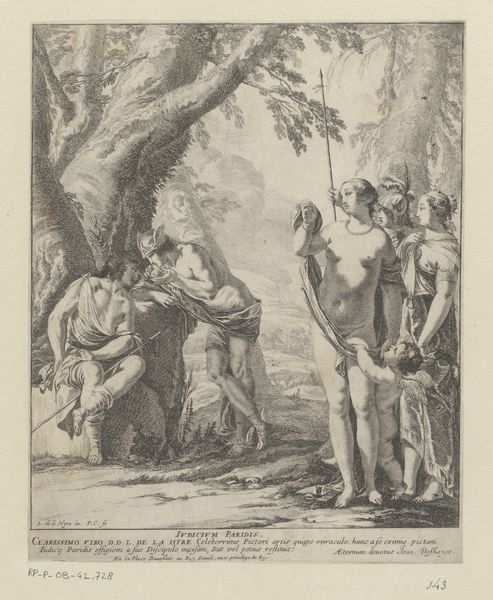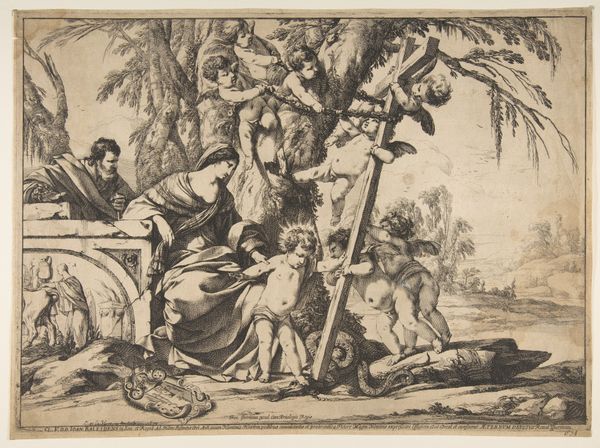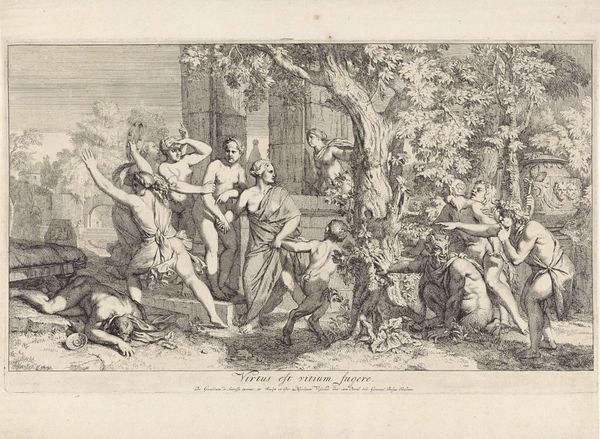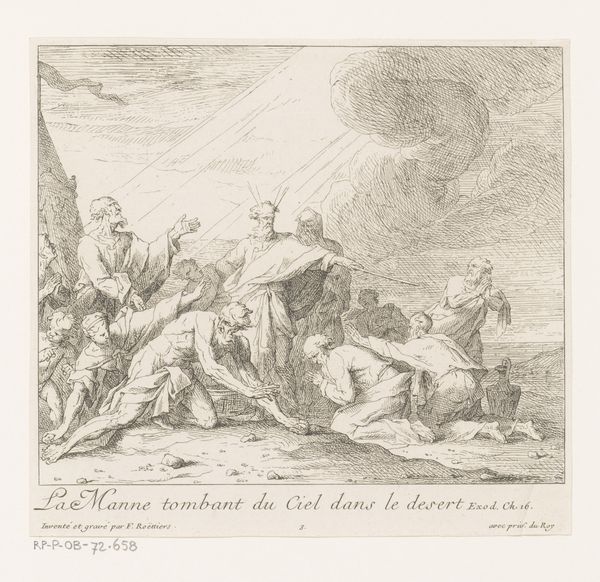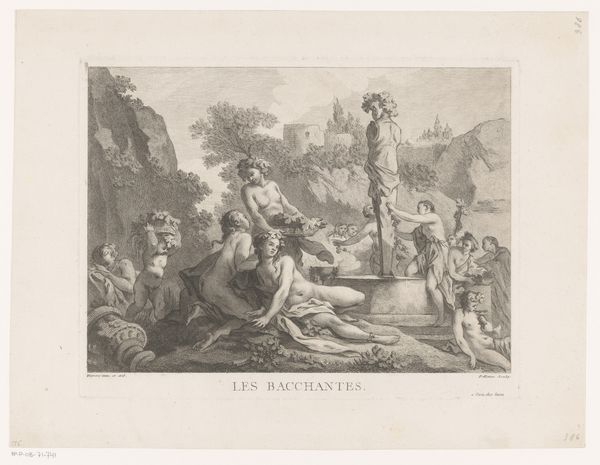
print, etching
#
narrative-art
#
baroque
# print
#
etching
#
landscape
#
figuration
#
history-painting
Dimensions: height 159 mm, width 172 mm
Copyright: Rijks Museum: Open Domain
Curator: Here we have "Moses Striking Water from the Rock," an etching dating from 1695 to 1742, created by François Roëttiers and now residing at the Rijksmuseum. Editor: The composition feels almost frantic, a tightly packed mass of bodies gesturing towards a central, commanding figure. The light etching makes it look ethereal, almost ghostly. Curator: Indeed. The etching technique allows for incredibly fine lines, crucial for detailing the narrative. Roëttiers emphasizes the moment of divine intervention, portraying the immediate aftermath of Moses striking the rock. Editor: Looking closer, I am struck by the figures' poses. They highlight the desperation and physical hardship of the Israelites, who are liberated by a powerful act by Moses. The rendering, particularly in the limbs, hints at an understanding of classical depictions, but is twisted with an almost palpable tension. We must consider this artwork’s relation to colonial exploitation and its reinforcement of patriarchal control in that time. Curator: A useful lens. I'm particularly drawn to the landscape. Note the stark contrast between the rough, rocky terrain and the delicate details in the etching lines—a material representation, if you will, of the miracle itself, emerging from harshness. And if we look at this print within the context of its creation, prints were often made as models for artisans of the time or for distribution into homes with limited incomes for private devotional reasons. Editor: Absolutely. Consider the tents in the background, symbols of temporary settlement, juxtaposed with the promise of abundance symbolized by the gushing water. This also raises questions of displacement and who has access to these resources that we can then analyze to gain more understandings around its function within society. Curator: And it's worth considering how the image functions as propaganda, almost. Distributing the images as models or to homes means disseminating its messages much easier, allowing religious values and structures of power into domestic space. The technical aspects are always intrinsically tied to their functions within society. Editor: This etching captures the precise moment where political power meets religious deliverance. These issues of colonial power can still influence modern-day audiences, requiring us to consider the purpose of works like these from different intersectional, post-structuralist approaches. Curator: It allows us to unpack assumptions, values, and hierarchies. Editor: Precisely, making our dialogue a process of iterative insight.
Comments
No comments
Be the first to comment and join the conversation on the ultimate creative platform.
